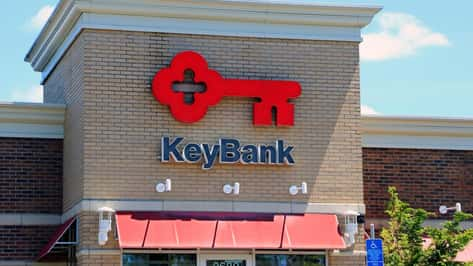“We experienced unprecedented deposit outflows,” said the First Republic Bank CFO on Monday. The news had just hit that First Republic suffered a massive $100 billion plunge in deposits in the aftermath of the meltdown of Silicon Valley Bank.
This shaved 50% off First Republic shares on Tuesday, down to the $8 range. Today FRB plummeted another 30% to under $6 per share, valuing the business at a $1 billion market cap. That’s smaller than many of Arc’s fintech banking peers… And keep in mind that FRB stock was near $150 a share in February, at $115 in early March—and down to $12 by March 20, post-SVB.
First Republic already had taken a $30 billion bailout from J.P. Morgan Chase and other giants, in the wake of the collapse of SVB and then Signature BankSBNY +6.2%, and the rescue of Credit Suisse by UBS Group.
But with First Republic handing out billions to its panicky customers, where did all that money go?
PROMOTED
My company is part of the fintech industry, and we benefited, sure: we gained tens of millions of dollars in new accounts to diversify across traditional banks. But we didn’t gain billions.
Instead, the money went to Too Big To Fail Banks, and it is likely that a big pile of it went to J.P. Morgan Chase, in particular. Chase gained $37 billion in new deposits in the first quarter, a new quarterly record, up to $2.38 trillion total. This helped fuel a 25% rise in revenue to $38.35 billion and a 52% spike up in profit, to $12.62B.
Best Travel Insurance Companies
ByAmy DaniseEditor
In fact, Chase got bigger, even as deposits fell in the first quarter at +0.1%, Wells FargoWFC +1.2%, Charles Schwab Corp., and State StreetSTT +0.8% Corp., as cash left for higher rates elsewhere.
Investing Digest: Know what’s moving the financial markets and what smart money is buying with Forbes Investing Digest.Sign Up
You may opt out any time. By signing up for this newsletter, you agree to the Terms and Conditions and Privacy Policy
This is good for Jamie Dimon and Chase shareholders—and bad for the rest of us. The biggest banks often pay the lowest interest rates: Chase took in almost $21 billion more in interest income than it paid out to its customers in the first quarter; this edge was up like 5
The billions that fled First Republic were in excess of the FDIC guarantee of a maximum of $250,000 per bank account. Fintech companies are able to disperse a client’s cash across guaranteed accounts at dozens of different banks. This results in reduced risk, a 4%+ return, and FDIC protection over $5 million per account.
And the FDIC didn’t have to lift a finger. Yet, especially in a panic, customers are drawn to the most massive banks. The First Republic panic shows that the FDIC should take further steps to stop another bank run.
Raising the FDIC guarantee to a higher and healthier level would strengthen regional banks and spark more competition with the giants. But guaranteeing all accounts for all amounts would invite banks to take much wilder risks, knowing the government would bail out their customers even if the banks failed them. I did some research, and it turns out FDIC insurance on bank accounts, first at $20,000, doubled to $40,000 in 1974. It increased to $100,000 in 1980 amid roaring inflation and a banking crisis.
The old $100,000 guarantee went up to $250,000 in the financial crisis of 2008, when President George W. Bush signed an emergency law to raise it temporarily, for only a year; this was later extended to year-end 2013. In 2010, President Obama signed the Dodd-Frank Wall Street Reform and Consumer Protection Act, and the $250K guarantee was made permanent.
So, what is the right level of FDIC insurance?
The $40,000 limit in 1947 is the equivalent of almost $260,000 today, according to the U.S. Bureau of Labor Statistics inflation calculator, making the $250K limit reasonable. But leaving it there would do nothing to reduce a panic and strengthen regional banks.
If the FDIC were to raise the guarantee to $1 million per account, this would cover more than 90% of the 22.5 million business and commercial accounts at the nation’s more than 5,100 banks. Another 1.5 million accounts have $1 million to $10 million on hand, and they could easily shield any amount beyond $1 million by splitting it up among multiple accounts, and I am certain the fintech industry would be eager to assist them.
An FDIC guarantee of $ 1 million—and no more—would cover the vast majority of accounts and make the regionals a stronger alternative to titans like Chase. Without breaking the bank.
